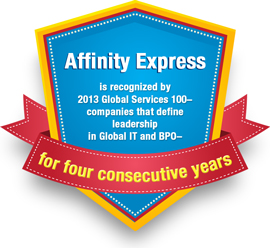February 1, 2013
by Kelly Glass
When I attended the National Retail Federation conference a couple of weeks ago, there was a session on “Exhibitor Big Ideas” dedicated to what global consumers say they really want in a multi-channel world, based on a 2012 study by NCR. The research was very enlightening about the current state of retail and the preferences of today’s consumers.
The study mapped what consumers look for and like with against retailers are actually offering and there is a lot of room for retailers to improve. In fact, retail will change more in the next five years than it has in the past 20 years.
 1. Personalization and target marketing
1. Personalization and target marketing
When it comes to personalized coupon offers:
- 69% of consumers worldwide would welcome them.
- 73% of shoppers said the availability of electronic coupons is a must-have for them.
- 27% of grocery retail locations provide personalized offers.
- 46% of favorite grocery retailers offer electronic coupons (“favorites” were a specific sub-set of retailers cited by respondents)
- Overall, 35% of U.S. retailers offer them but 80% of American consumers want them.
2. Buy anywhere, get anywhere
Shoppers expect a connected or converged experience. They want to feel like they are dealing with the same business in-store, online, in mobile apps, etc. Brick and mortar stores must embrace that consumers are using technology. For many, the internet has become the shopping channel of choice. Retail has gone from a B2C to a C2B experience.
For each company, all of the pricing strategies, policies and procedures have to look and work the same. The best way to accomplish this is to put the right platforms in to manage the entire ecosystem versus managing all of them individually.
- 78% of shoppers in North America want to purchase anywhere and get merchandise shipped or picked up anywhere.
- 82% of favorite retailers in North America offer the option but 26% did not.
There are some interesting developments happening. Retailers are creating multiple channels for returns. It’s good they are doing this because expensive or lengthy return policies and procedures were reasons for not making purchases for 76% of consumers.
Retailers have to think about getting creative because there are many opportunities to think outside the box. For example, Sears had a drive-through window for returns after the holidays.
3. In-Store Self-Service
Most grocery stores have some self-service options but there is opportunity to incorporate this approach across all retail categories. Even in grocery, many retailers have self-service in the front lanes but not enough help around the store. Consumers want independence and control of their shopping experience.
- Nearly 20% of retailers provide in-store self-service
- However, 44% of North American consumers desired increased in-store self-service options.
Apple consumers can walk in, buy accessories and walk out without speaking or engaging with store associates.
4. Consumer Mobile
Retailers have to do mobile right and consumers love it when they do. The experience should be clean, fast and positive. Furthermore, it has to be timely. When it works, the adoption rate will be strong and fast. From mobile apps and offers to research and payment—there is no end to the trend.
Regarding mobile scan and pay:
- 52% of consumers want mobile scan and pay
- Only 12% of their favorite grocery stores offer (because it is tough to implement and there are operational considerations).
Retailers who drive this feature early may actually get consumers to switch their loyalties. Even if retailers decide they want to hang back and join this trend late, they should start soon in the next one to three years because consumers will demand this feature.
Mobile can be a win-win.
- Consumers are using technology for faster checkout and personalized offers. They also use it to monitor spending.
- Retailers get valuable insight into purchasing behavior, store utilization/traffic patterns and can influence shoppers at the point of decisions with targeted offers. On top of that, scan and pay is a huge opportunity.
Stepping back to look at the big picture, time is the biggest problem retailers can solve for consumers. And they are getting more impatient. They digest technology really quickly. So if “Big Brother” is smart, he will be successful.
Ultimately, retailers have to remember that the consumer is in charge. Purchasing used to be a straight line of activity. Now there are lines all over the place in the C2B experience. The best advice for retailers is to think of all the points of contact, look at their technology architecture and centralize to deliver what consumers want, as well as how and where they want.
What makes certain retailers “favorites” for you and what multi-channel options do you value most?
 Super Bowl kicks off in 19 days with the first outdoor, cold-weather super bowl in New Jersey. Super Bowl XLVIII will also be the first time two states, New York and New Jersey, proudly co-host the game. A 47 year tradition of NFC and AFC rivalry, Super Bowl has opened the doors to quite a few American “largest” facts including:
Super Bowl kicks off in 19 days with the first outdoor, cold-weather super bowl in New Jersey. Super Bowl XLVIII will also be the first time two states, New York and New Jersey, proudly co-host the game. A 47 year tradition of NFC and AFC rivalry, Super Bowl has opened the doors to quite a few American “largest” facts including:




